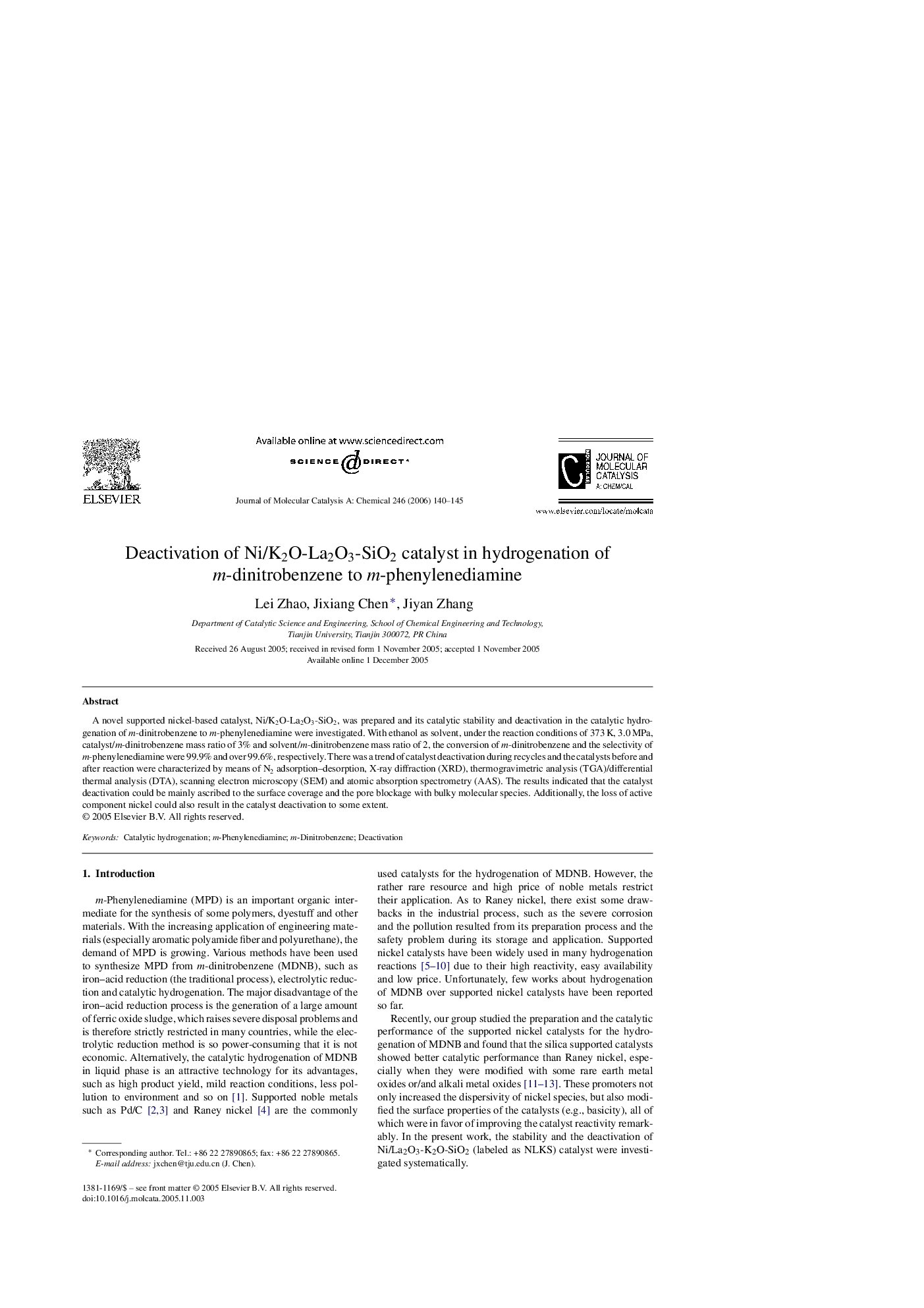| کد مقاله | کد نشریه | سال انتشار | مقاله انگلیسی | نسخه تمام متن |
|---|---|---|---|---|
| 69060 | 48529 | 2006 | 6 صفحه PDF | دانلود رایگان |

A novel supported nickel-based catalyst, Ni/K2O-La2O3-SiO2, was prepared and its catalytic stability and deactivation in the catalytic hydrogenation of m-dinitrobenzene to m-phenylenediamine were investigated. With ethanol as solvent, under the reaction conditions of 373 K, 3.0 MPa, catalyst/m-dinitrobenzene mass ratio of 3% and solvent/m-dinitrobenzene mass ratio of 2, the conversion of m-dinitrobenzene and the selectivity of m-phenylenediamine were 99.9% and over 99.6%, respectively. There was a trend of catalyst deactivation during recycles and the catalysts before and after reaction were characterized by means of N2 adsorption–desorption, X-ray diffraction (XRD), thermogravimetric analysis (TGA)/differential thermal analysis (DTA), scanning electron microscopy (SEM) and atomic absorption spectrometry (AAS). The results indicated that the catalyst deactivation could be mainly ascribed to the surface coverage and the pore blockage with bulky molecular species. Additionally, the loss of active component nickel could also result in the catalyst deactivation to some extent.
Deactivation of Ni/K2O-La2O3-SiO2 catalyst in hydrogenation of m-dinitrobenzene to m-phenylenediamine was systematically investigated by means of N2 adsorption–desorption, XRD, TGA/DTA, SEM and AAS. The main reasons for the catalyst deactivation were the surface coverage and the pore blockage with bulky molecular species. Figure optionsDownload as PowerPoint slide
Journal: Journal of Molecular Catalysis A: Chemical - Volume 246, Issues 1–2, 1 March 2006, Pages 140–145